It’s not often a chef tells you he’s very nervous. Particularly when he’s widely considered the best in the country. But as the water supply in Cape Town diminishes—with dam levels at 21.9 percent as of April 2, only 11.9 percent of which is drinkable—nerves are exactly what chef-proprietor Luke Dale Roberts of the city’s multiple award-winning restaurant, The Test Kitchen, has been experiencing.
His concern is how his Drought Kitchen menu—a pop-up tasting menu that will replace his regular twenty-course tasting menu during April and May 2018—will be received. It’s a gamble for an internationally celebrated restaurant with commensurate pricing to serve dishes like pancetta-wrapped sweetbreads with porcini and brown butter hollandaise on sheets of cardboard, with paper napkins (even if they are beautifully branded ones). But given Cape Town’s current water crisis, perhaps it’s even more of a gamble not to.
How do you run a restaurant without water? It’s something a chef isn’t taught in culinary school, or even on the job. Yet with Cape Town facing its worst drought in four hundred years, it’s top of mind; in South Africa’s Western Cape Province, agriculture, agri-processing and tourism are the top three industries. The concerns in restaurants and hotels extend beyond how to make stocks, blanch vegetables, and cook pasta; they’re about washing plates and glasses, mopping floors, and flushing toilets. At the very core, they’re about employees, and how to save their jobs.
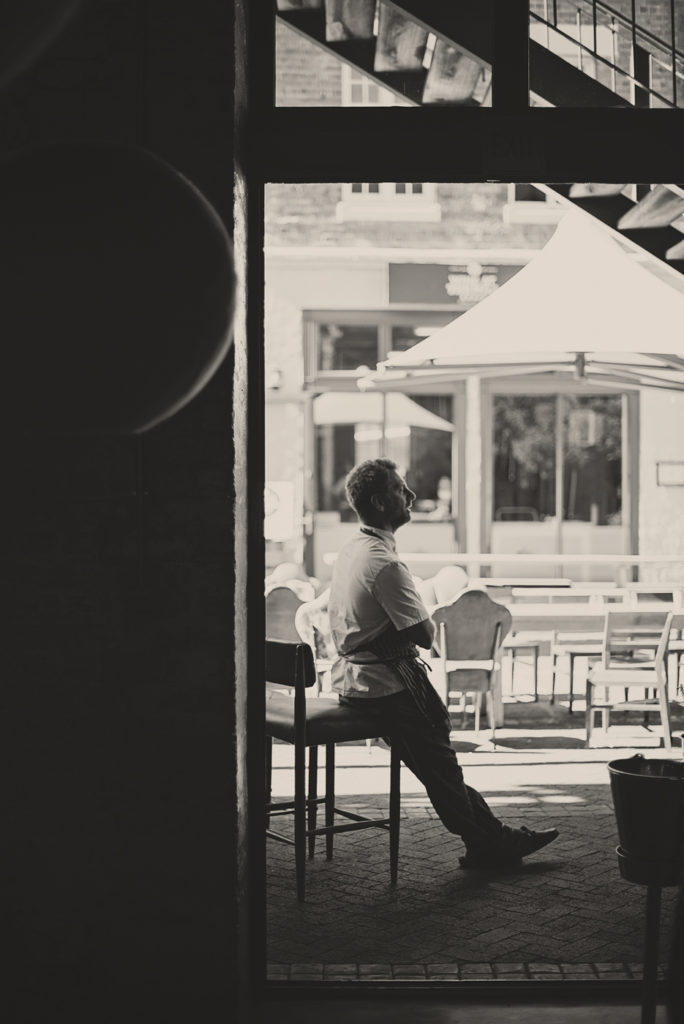
Roberts and his team are known for remarkable innovation and reinvention, creating dining experiences around superb and surprising flavors with out-of-the-box presentations. In 2016, The Test Kitchen placed number twenty-two on S. Pellegrino’s World’s 50 Best Restaurant list and has been Restaurant of the Year for six straight years in South Africa. There is public expectation for a restaurant like this, which is also Cape Town’s most expensive. How will customers react to the necessary changes a water crisis demands, particularly visitors from outside South Africa who are less acquainted with the drought’s impact?
Living in Cape Town, I feel justified in saying climate change is real. Cape Town has a Mediterranean climate, with winter rainfall and hot, dry summers. When I moved here in 1994, ten to twelve days in a row of rain, with a day or two of sunshine in between was common in winter. Yet, in recent years, it’s been a day or two of rain, followed by a week or two of sunshine.
Four years ago, Cape Town’s dams were nearly full. Three consecutive years of drought have since taken their toll in a city that is one hundred-percent reliant on rainwater catchment in regional dams for its potable water supply. While desalination plants and other infrastructure and private solutions are in various stages of development, Cape Town is still years from shedding its reliance on dam water.
With any crisis of this nature, there’s a blame game, and it is argued that besides Mother Nature, politics and the city’s rapid growth have been factors. But recently, there has been tremendous public acceptance of the reality of our situation, and an encouraging move toward new, more sustainable lifestyle choices.
The warnings of faucets running dry began in early 2017. Midway through the year, Capetonians were told that unless water consumption curbed dramatically, come 2018, they’d be facing Day Zero—the dreaded day dams would drop below their minimal level and the city would be forced to turn off the municipal water supply. Since that announcement, Cape Town’s water situation has been a shifting pas de deux, between supply and consumption.
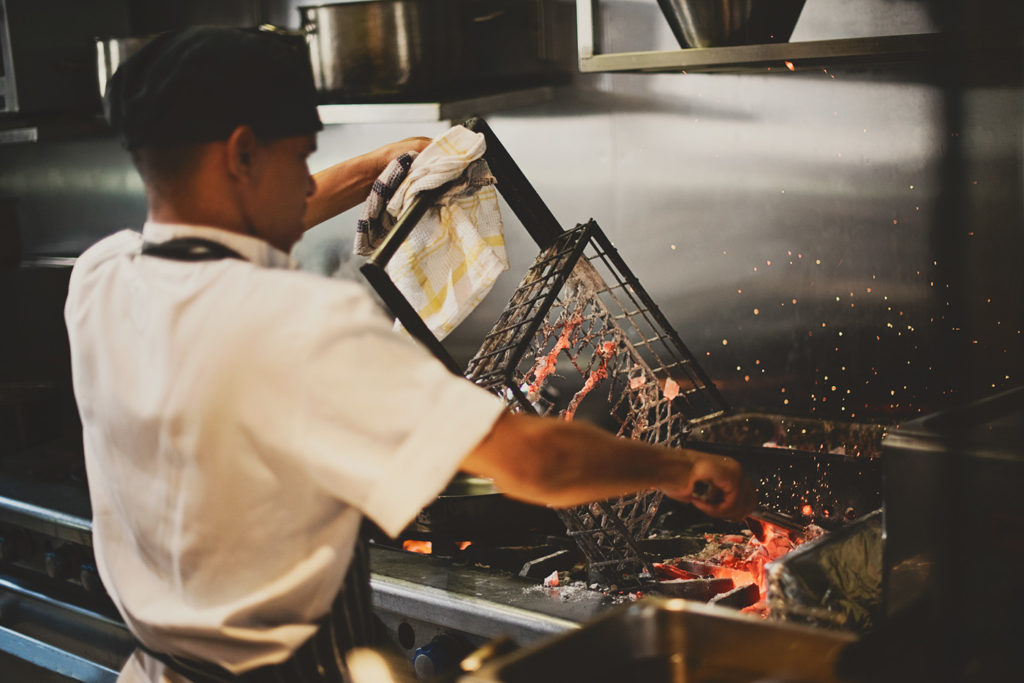
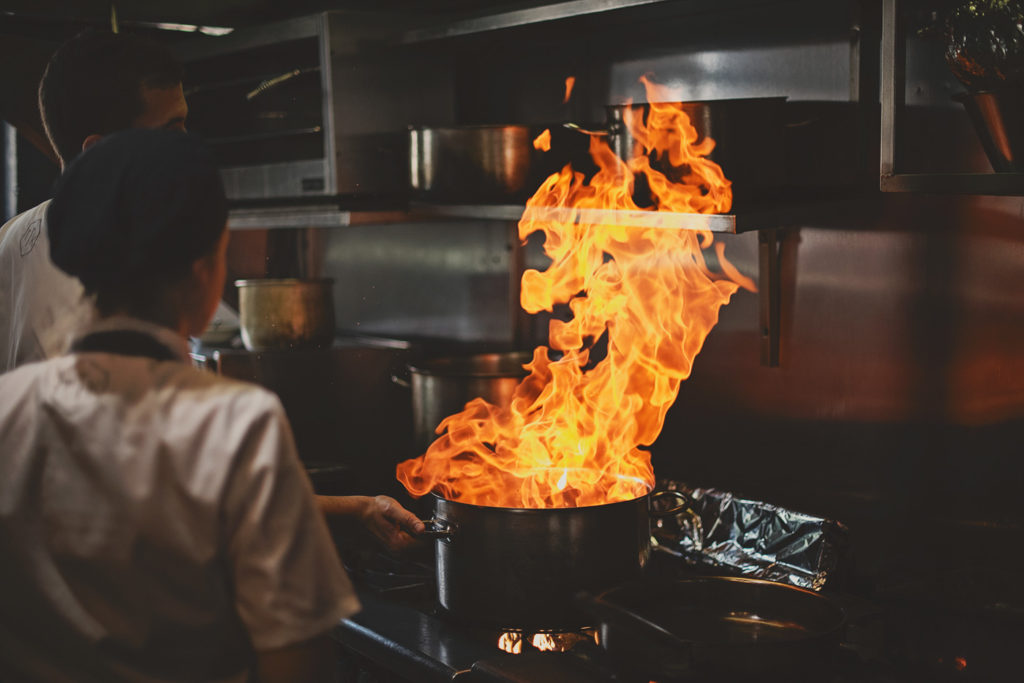
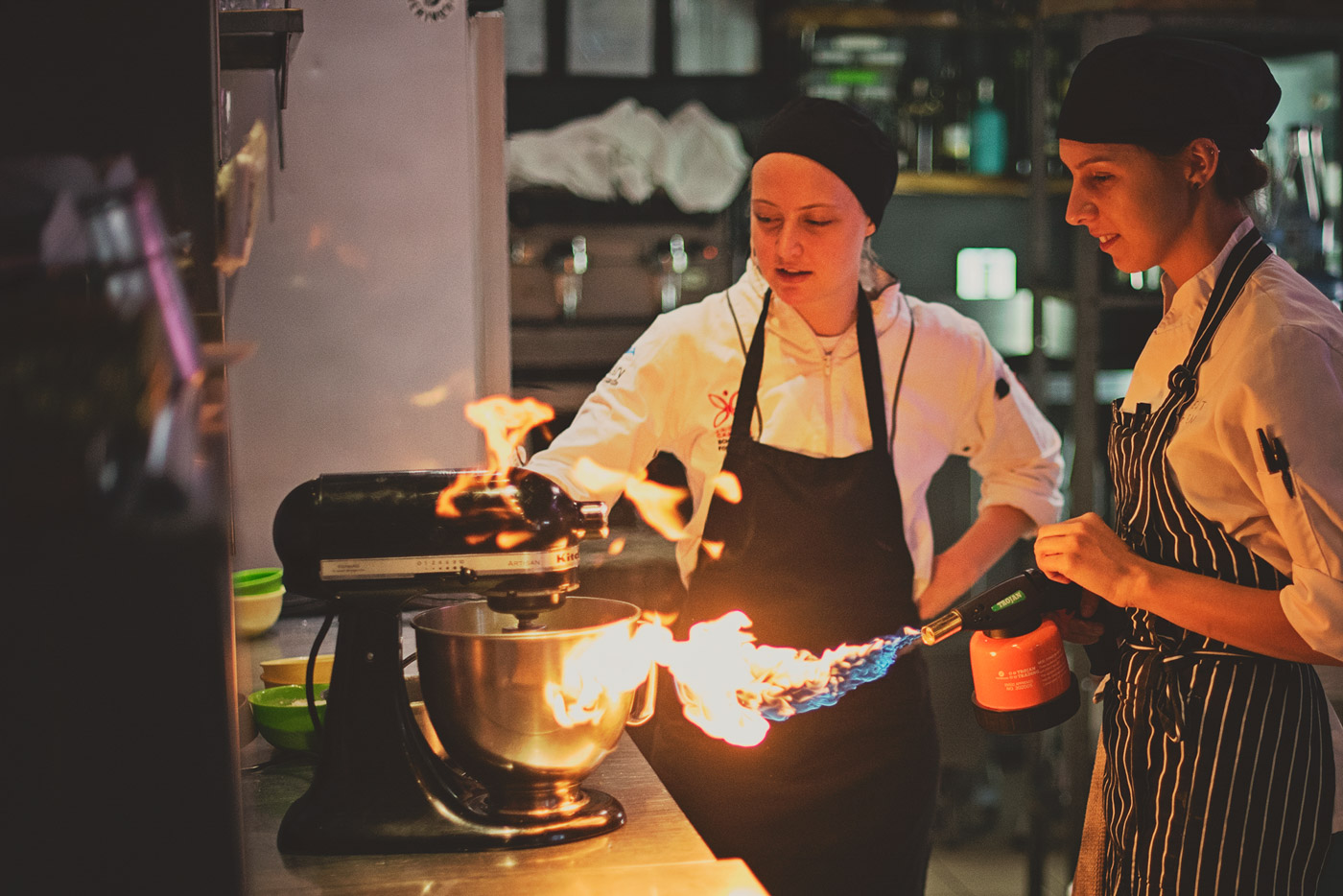
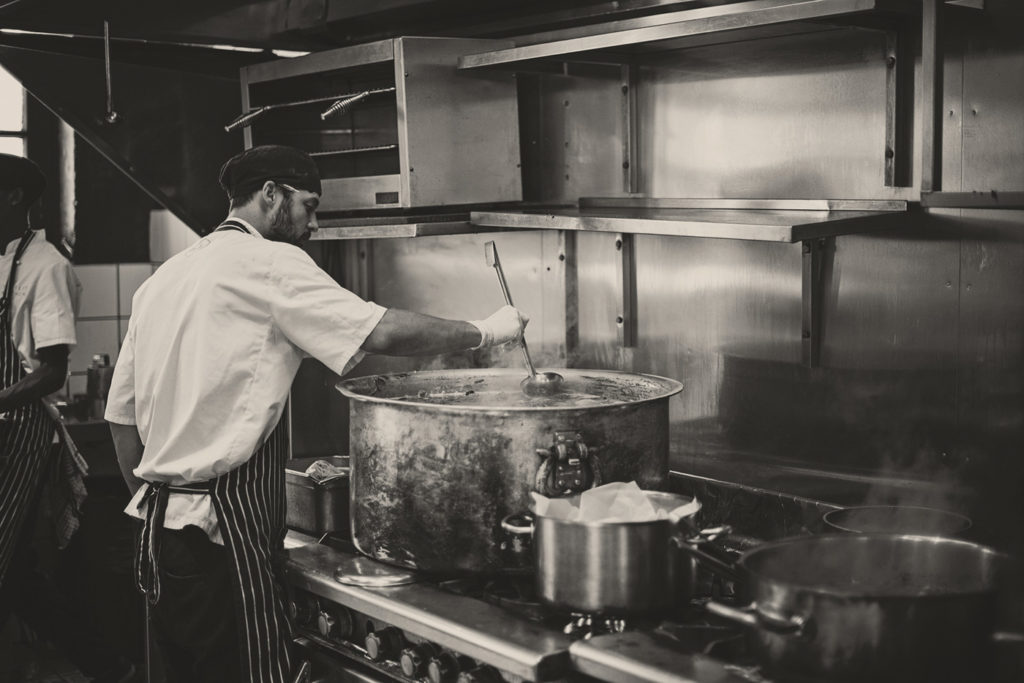
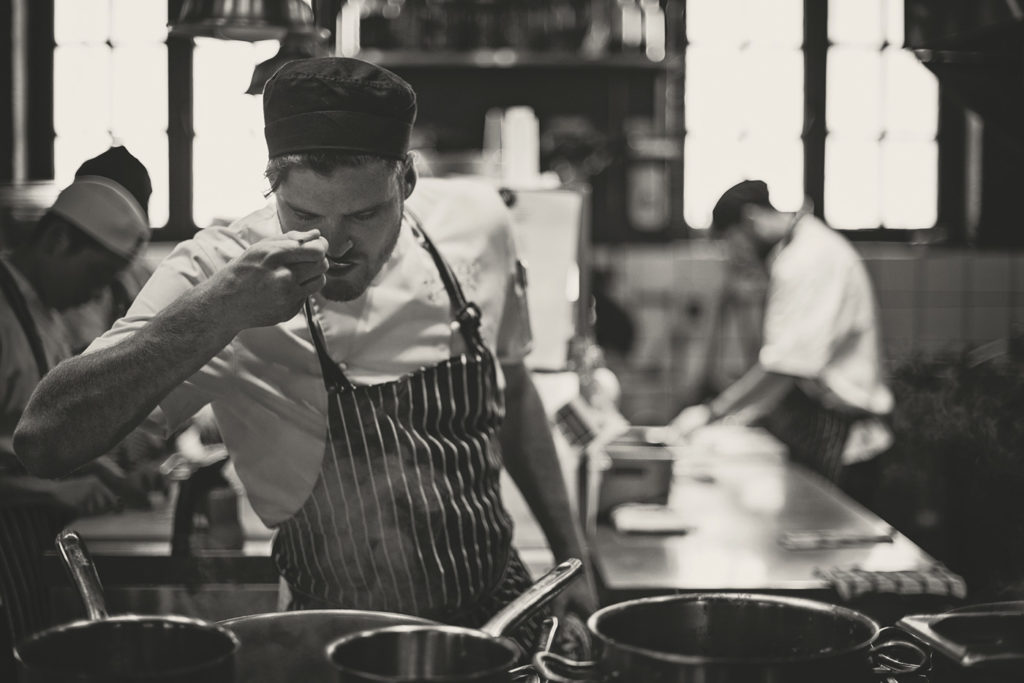
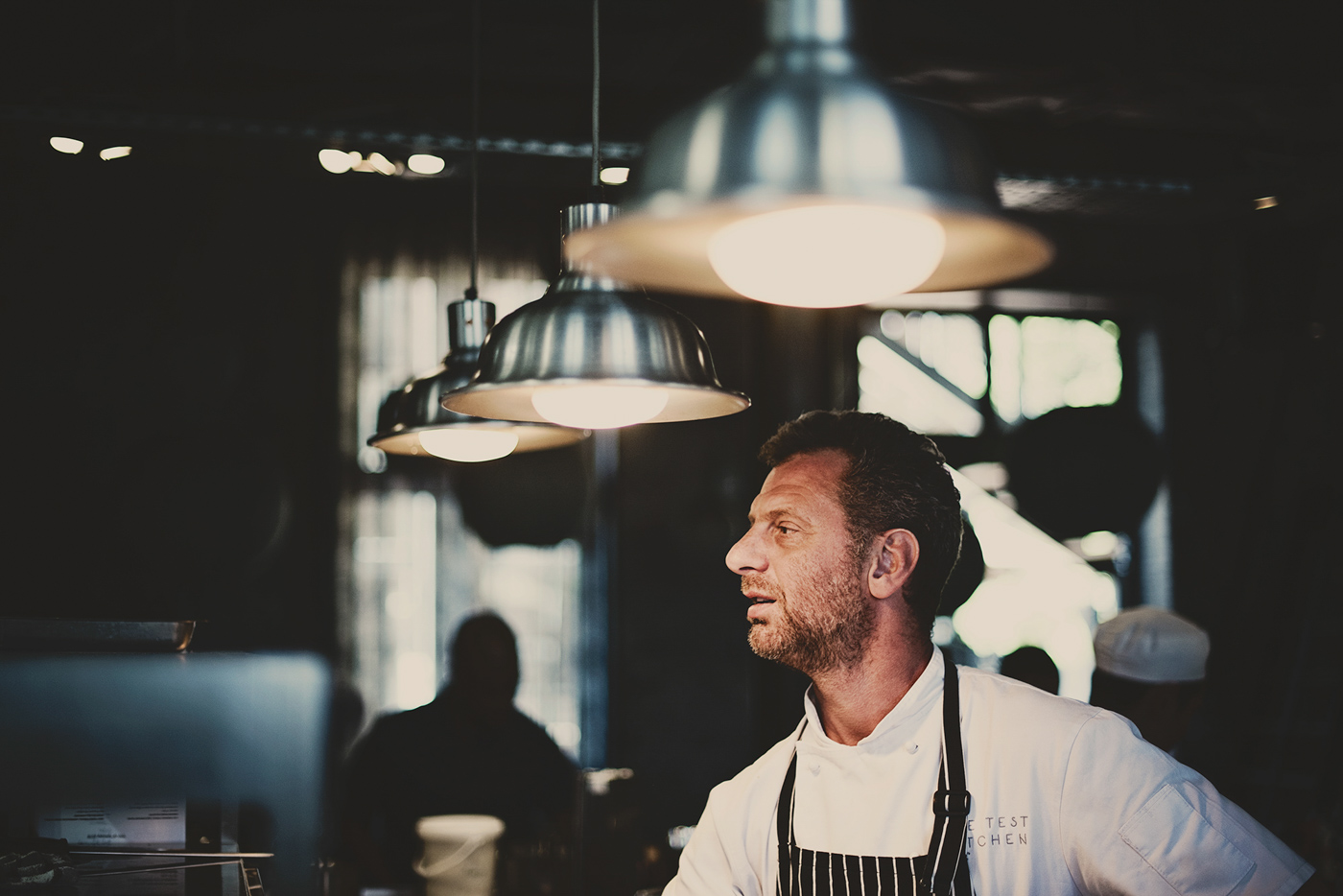
In February, residents were told to reduce their water consumption by fifty percent, and businesses by forty-five percent. The response was slow at first, but increasingly significant over the passing weeks. Day Zero shifted from March, to April, to May, June and July. As of mid-March, a couple of months before the beginning of the rainy season, it was pushed out to 2019.
Long before serious restrictions fell into place, Roberts was actively considering ways to reduce water usage in his restaurants (he also owns The Pot Luck Club, and is a partner in The Shortmarket Club). He and The Test Kitchen head chef Ryan Cole undertook a complete reevaluation of restaurant operations, from food preparation to service to cleaning up. Once talk of Day Zero began, Roberts became even more micro-focused—this time, on how to keep the doors open without water.
“Everything you do to save water impacts employment,” says Roberts. In restaurants, the lion’s share is used for dishwashing and laundry. Months ago, The Test Kitchen eliminated its table linens, massively reducing water consumption. Two full-time employees were shifted from laundry to kitchen prep, and the reduction of crockery in use has meant one dishwasher is now training in the bar.
General water-saving practices like reusing water from ice buckets and air conditioning units to mop floors have long been in place. Scullery hoses that used to spray water nearly constantly over dirty dishes and pots (at about two liters every twelve seconds) have been disconnected, diffusers have been fitted to faucets, and two-liter Coke bottles have been placed in toilet cisterns to reduce flushed water.
This new restaurant-wide water consciousness has led to innovative recycling of water. For example, emptied water from kitchen bain maries is now treated with chlorine and then used to wipe down kitchen surfaces.
It has also had a minimal impact on cooking practices, although Roberts is quick to say he will never cut corners when it comes to food. “We do a lot of dashi-based sauces and go through about six hundred liters of stock per week,” says Cole. “It used to take one hundred liters of water to make nine liters of stock, but we worked that out by using a pressure cooker, we get nearly one hundred-percent yield … we start with three liters of water and get 2.5 to three liters of stock. It’s an infusion rather than a reduction.”
On the flip side of water savings are drought-associated costs. Produce prices have risen by about fifteen percent, says Cole, with the most significant increases in dairy products. Some local organic suppliers with whom the restaurant has built relationships with over the years are no longer able to supply them (agricultural production in the Western Cape is down by twenty percent due to the drought), and The Test Kitchen is forced to fly in certain produce from Johannesburg, like micro-vegetables and radishes.
The current Drought Kitchen pop-up menu is no publicity stunt. It was conceived at a time when it was expected there would be no water in Cape Town. At the time, The Test Kitchen was serving about twenty courses, each with different serviceware, from cutlery and crockery to tiny copper saucepans and jugs.
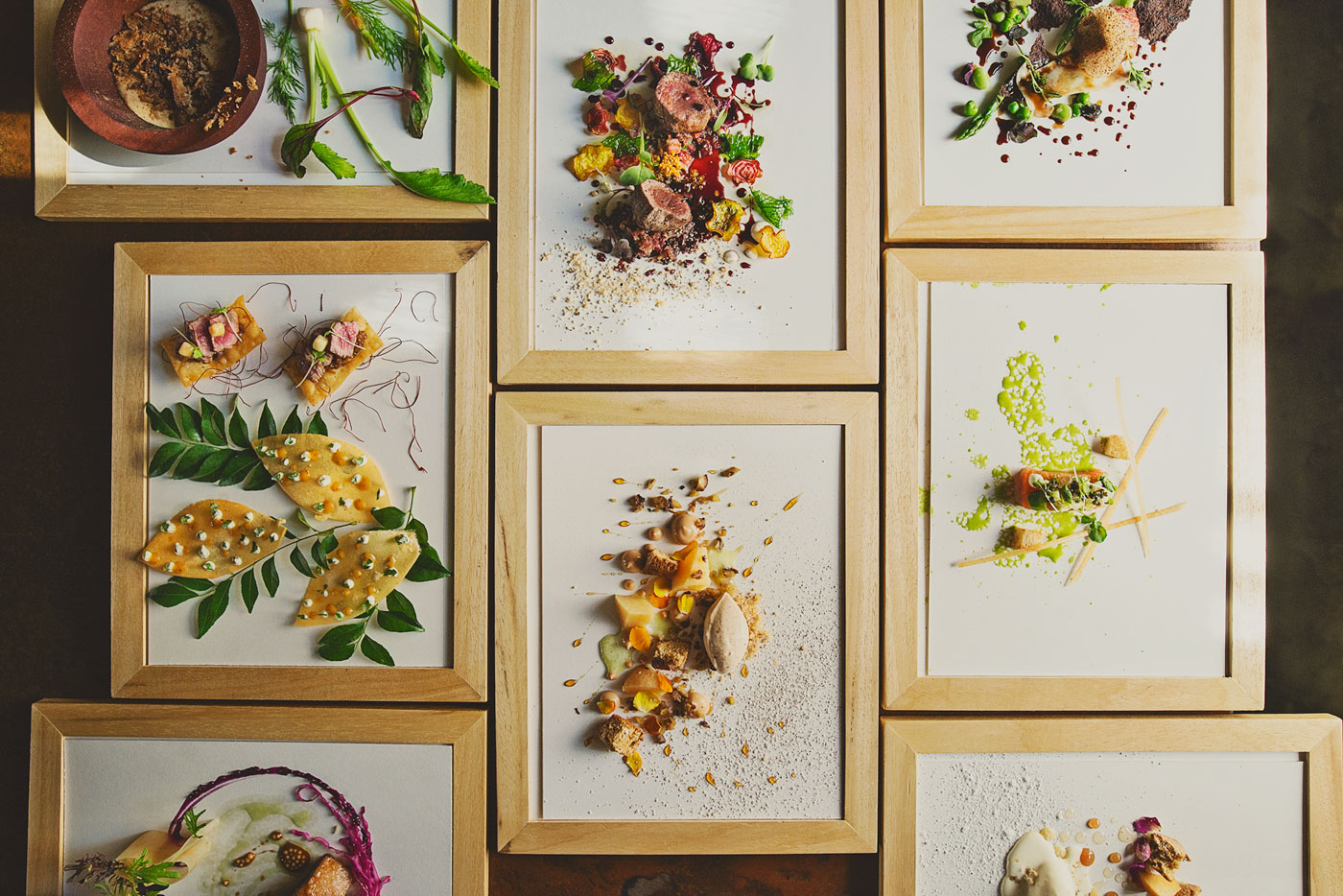
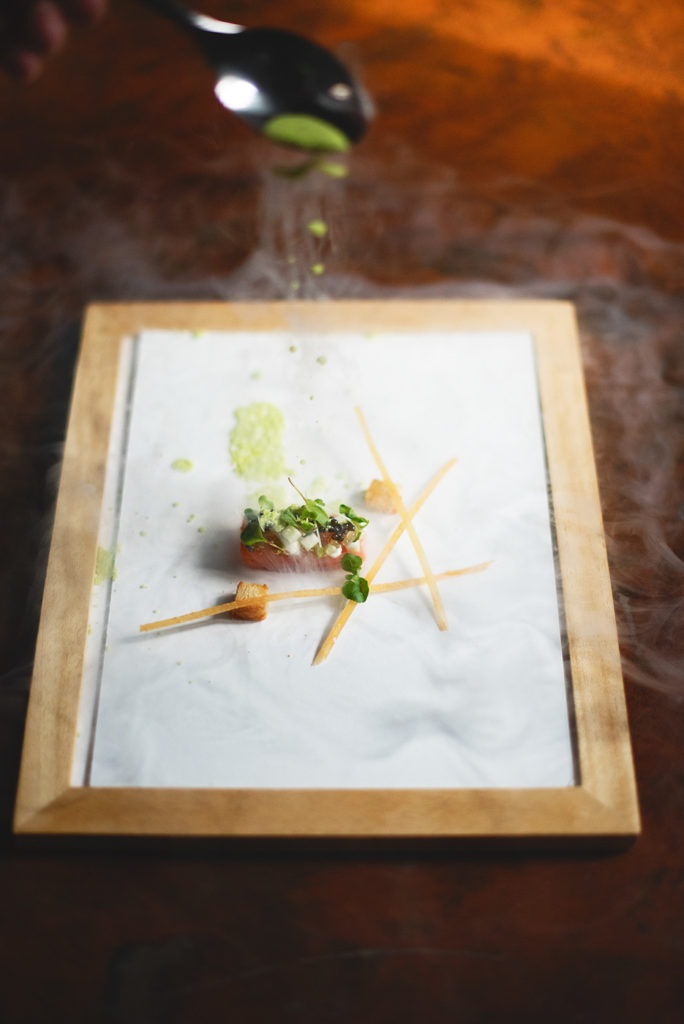

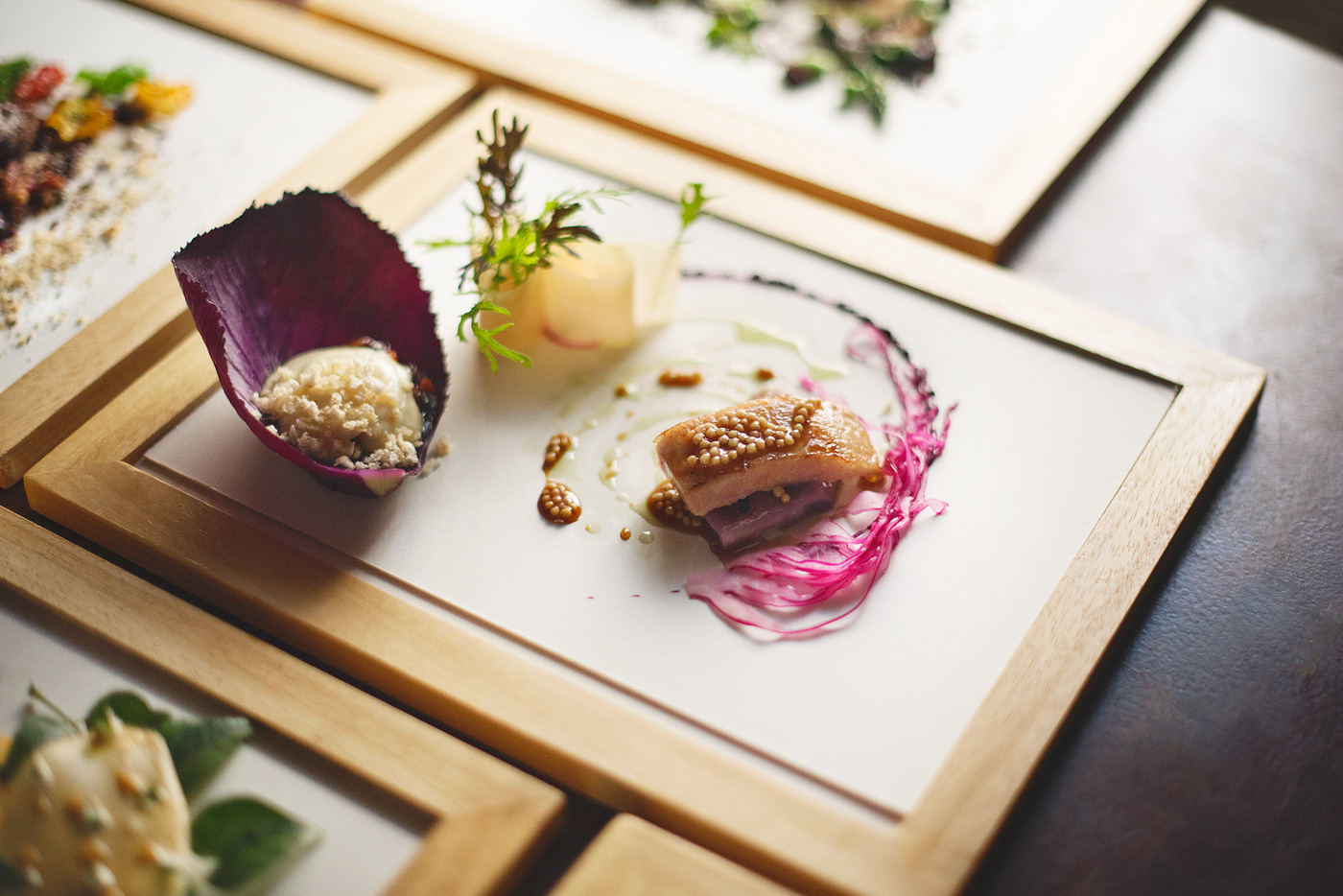
The process began with a rethinking of how to plate and serve food. “We needed to start looking at plating on disposable crockery, but everything on the market looked cheap,” says Roberts. One day, he had a light-bulb moment after walking past a framing shop near the restaurant. The third-generation framer has since supplied him with 120 handcrafted simple rectangular wooden picture frames, into which the restaurant fits interchangeable sheets of recyclable, non-absorbent, white backing board for each course. This change eliminates the washing of five thousand dishes per week.
Diners are provided with a fork, knife and butter knife, and are invited to use the same cutlery throughout the meal. Saucing has also been reconsidered, and either slightly reduced with certain dishes, served in a single pot in the center of the table, or brought out by a chef to dress dishes tableside, using the same saucepan and serving spoon throughout the evening.
“The difficulty is in going forward, because The Test Kitchen is all about evolution, so new dishes need to be flat plate-friendly,” Roberts says. “They can’t have sauce running off them.”
The Drought Kitchen menu—which is six courses and three snacks—is about half the price of the regular menu, which normally has about twenty courses. The experience, however, is just as exceptional.
Without giving too much away—as Roberts is a great believer in the importance of the element of surprise—the meal starts with several snacks, including a “tip of the hat to Cape Malay flavors”—Bo-Kaap Slangetjies, which are lentil-flour crisps served with lemon atchar, homemade sour cream and curry leaves—and a platter of exquisite baby vegetables served with Korean-style Ssamjang dip topped with crushed bits of homemade marmite on toast (the ice water used to crisp the vegetables is later repurposed for cleaning).
There is a twelve-hour hot smoked trout served with a watercress snow, lime amasi (fermented milk) curd, yuzu jellies and caviar, and a springbok (venison) dish which is “all about beetroot”—crispy beets, beet and hazelnut stuffing, and a beet reduction, along with a hazelnut curd complementary pink slices of pan-seared springbok. “Peaches & Lavender” is a floral dessert of the fruit compressed in lemon verbena and rose geranium, with a yogurt and lavender ice cream and a small brown butter cake.
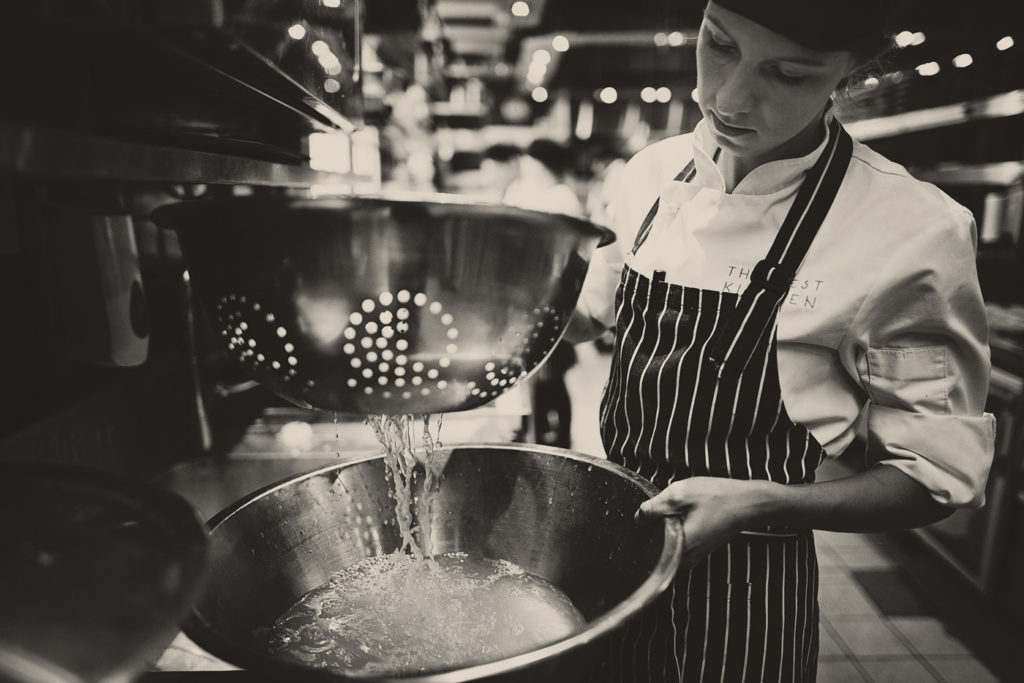
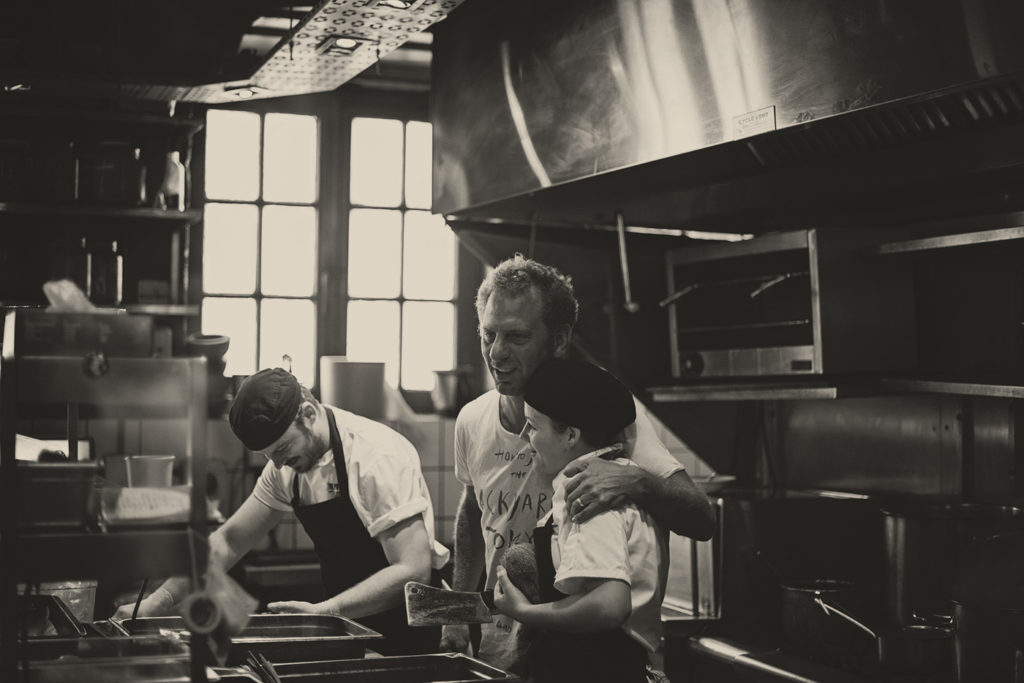
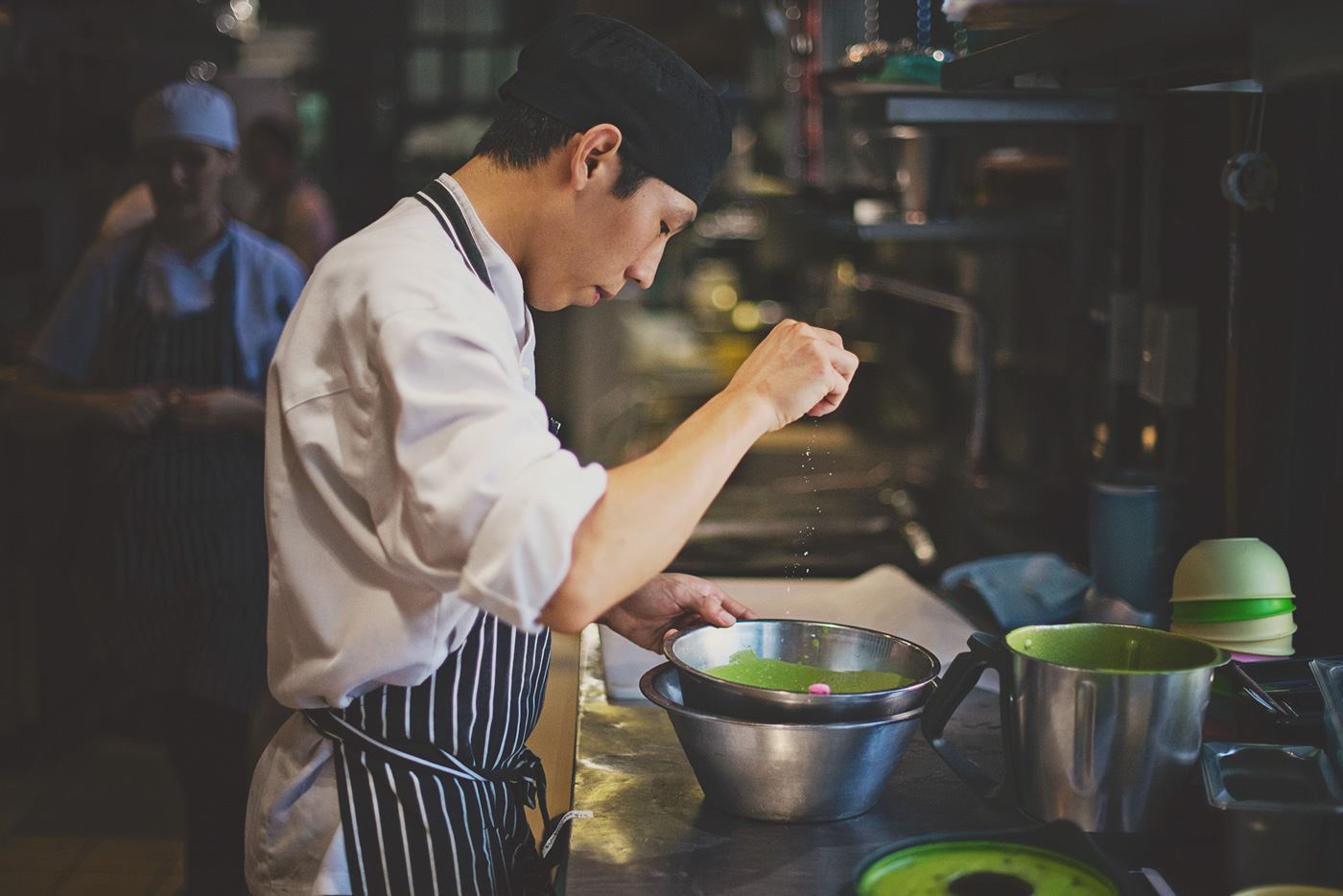
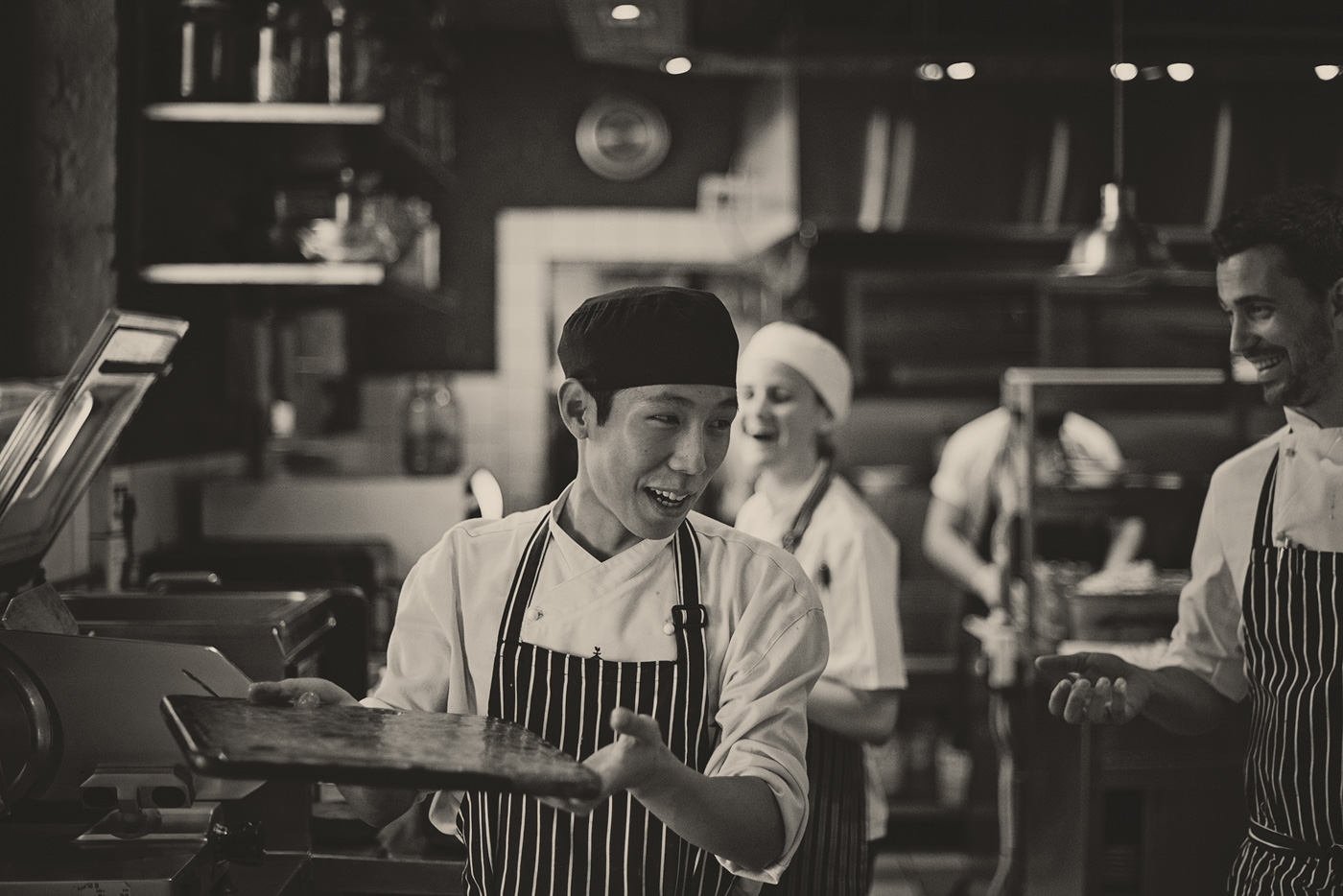
In March, The Test Kitchen did a gradual soft roll-out of the Drought Kitchen menu, offering a course or two on the new picture-frame plates. “I’ve told customers at the end of the day, we’ll give you crockery if you’re suffering, but people have been giving the frames eleven out of ten,” says Roberts. When customers make their reservation, they are sent a letter filling them in on this special menu and its plating.
“My biggest concern about doing this whole thing has always been that people will judge us negatively,” Roberts continues. “In other words, how can they pay all this money and be in the best restaurant in the country and not be eating off the crockery you’ve so carefully chosen?”
Perhaps this is an opportunity for diners to embrace a more sustainable approach to eating out, and also for the restaurant to push themselves. “These things are sent to test you,” says Roberts, who along with part of his team, is also doing a pop-up in Mauritius during the same period. He expects the inspiration from both pop-ups will be fuel for future creativity. “You put yourself in uncomfortable situations and you come up with something new. I’m hopeful, and quite confident that April and May will be tough months, but it will make us grateful for June and what we’ll have to experiment with.”
If Cape Town experiences another dry winter and Day Zero does arrive in 2019, residents will have to go to about two hundred collection points to get their allocated 6.5 gallons of water per day per person, which would make running a restaurant hugely challenging. But Roberts hopes for long-term solutions. “My ideal scenario is that we continue to save water in whatever way we can, even down to installing grey water solutions in the laundry, harvesting and recycling water,” he says. “But ultimately, I’d like to be able to use plates again.”
For now, every drop counts, and hopefully conscious efforts like Roberts’ endure.





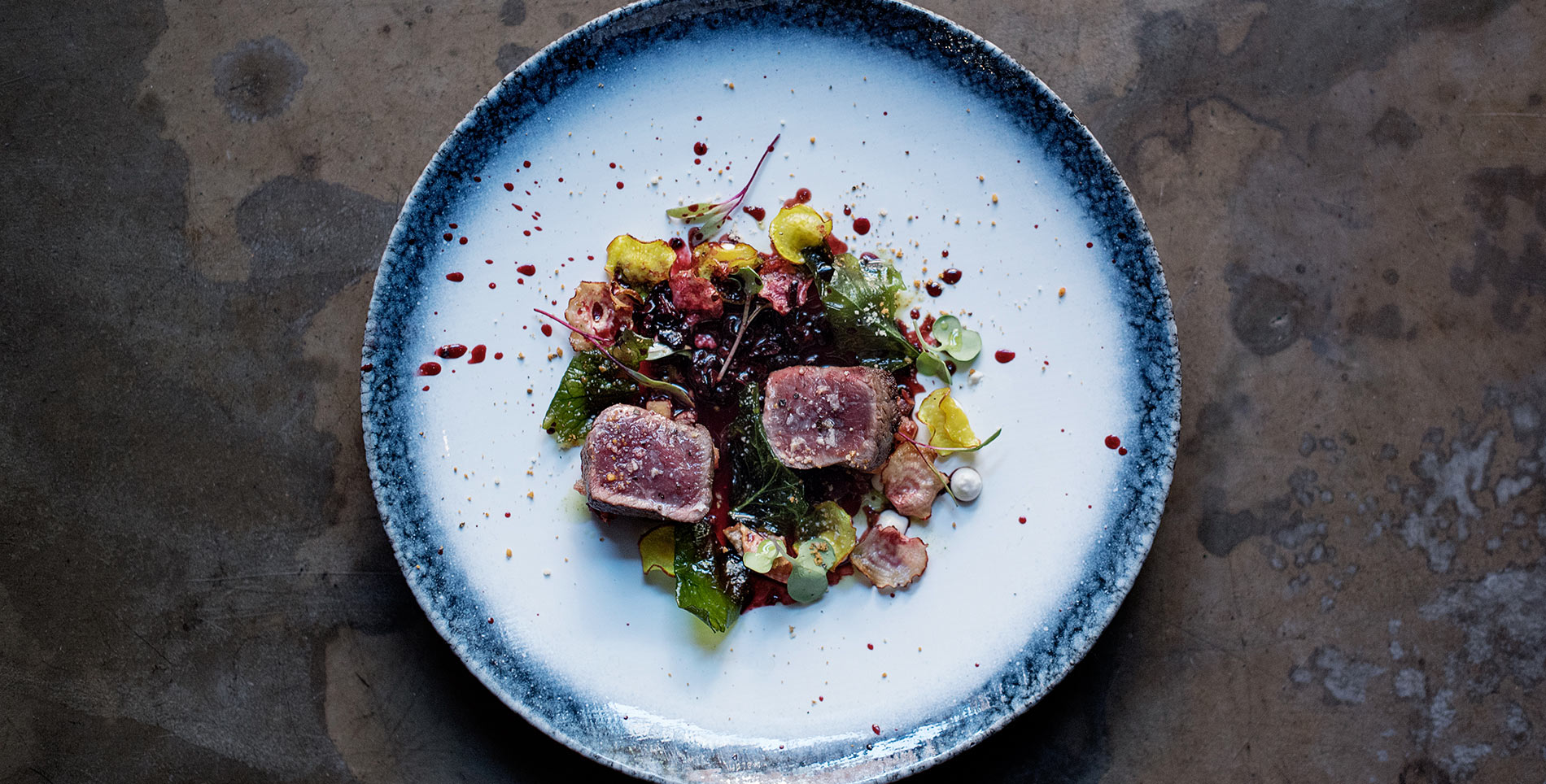

Our comments section is for members only.
Join today to gain exclusive access.